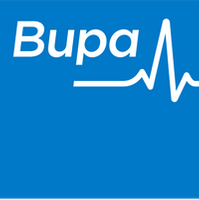Three steps to improve engagement and address quiet quitting
Quiet quitting. It's defined as doing the minimum your job requires in order to prioritise life outside work. And, it's been named as one of the Collins’ Dictionary top ten words and phrases of 2022.
But is it really a trend, or simply a tagline on social media?
The term was coined by the magazine Business Insider, in an article which focused on a recruiter who had cut back his hours and decided to “coast”.
And it went viral as Gen Z users generated millions of TikTok views posting their takes on the phenomenon. As one explained, “You’re quitting the idea of going above and beyond.”
However, Derek Thompson, writer for the Work in Progress newsletter which maps employment trends, argues: “Statistically speaking, quiet quitting is not actually a thing. Or, at least, it is not a new thing.”
He fears the focus on so-called quiet quitting may distract employers from more fundamental challenges. “Complex questions such as ‘Am I running my team effectively?’ and ‘Is hybrid work actually working out for us?’ can be reduced to the confident diagnosis that young people just don’t want to work.”
Employees aren’t engaged
Jim Harter, chief scientist of Workplace Management and Wellbeing at Gallup, says the characteristics of quiet quitting align with the demographic traditionally known as ‘not engaged’ – first described in an academic journal in 1990.
What is new is the extent of this lack of engagement, particularly among Gen Z employees born in the late 1990s and early 2000s. In its State of the Global Workplace 2022 Report, Gallup estimates that globally only one in five (21%) employees is engaged at work. And the percentage of employees under the age of 35 who are engaged has dropped by six percentage points from 2019 to 2022.
The picture is even more pronounced in the UK. The Gallup data suggests that only one in 10 employees (9%) is engaged, a two-point fall from pre-pandemic levels.
Why quit quietly?
A recent Axios poll found that:
- 82% of Gen Zs thought the idea of doing the minimum required to hang on to their job was appealing
- 15% of this group were already practising quiet quitting.
The definition given in the Gallup report provides clues as to why employees check-out in this way. It found: “Not engaged employees are psychologically unattached to their work and company. Because their engagement needs are not being fully met, they’re putting time – but not energy or passion – into their work.”
Future fears
Research by Deloitte shows that some of this stems from Gen Z’s fears for the future and their own financial situation.
- Almost half (46%) feel constantly stressed or anxious, the same number say they are burnt out because of work pressures
- 40% want to quit within two years
- Nearly half (46%) live from payday to payday
- 43% have taken a second job to try to make ends meet.
Tipping point
The latest Bupa Wellbeing Index confirms that younger staff are more likely to be struggling with their emotional wellbeing.
Only 14% of 16 to 24 year olds report very good mental health. In contrast, 38% of over-65s report very good mental health.
This group is also more likely to take a wider view of the workplace.
- Two in five (37%) Gen Zs have rejected a job or assignment because it did not align with their personal ethics
- And, 46% of Gen Zs and millennials in senior positions rejected a job or assignment too due to personal ethics.
Becoming more open
However, some commentators believe that Gen Zs may be the canaries in the metaphorical coal-mine who call-out unhelpful work practices and voice concerns shared by many of their older colleagues.
Bruce Daisley the former vice-president of Twitter Europe and author of The Joy of Work and Fortitude: Unlocking the Secrets of Inner Strength, dismisses the notion that Gen Z is a generation of ‘snowflakes’ who can’t cope with pressure.
He argues: “It’s made up of young people who are experiencing the same stresses as many of their older co-workers, but who are more prepared to be open about this.”
Dr Arun Thiyagarajan, general manager, Bupa Health Clinics, adds: “They have come through an education system the World Health Organization ranked the third most stressful in a survey of 45 countries across Europe and Canada. Many have had to navigate unpaid internships, careers started during lockdown and an increasingly ‘on-call’ approach to work”.
Engage for success
Dr Thiyagarajan continues: “Tackling issues around engagement and supporting Gen Z and millennial employees will be essential if organisations are to survive and thrive”.
Analysis by the Saïd Business School at Oxford University, which looked at 339 studies tracking the wellbeing of more than 1.8million employees across 82,000 businesses and 49 industries, found “a significant, strong positive correlation between employees' satisfaction with their company and employee productivity and customer loyalty, and a strong negative correlation with staff turnover”.
Three-point plan
Gallup suggests a three-step strategy to improve engagement address quiet quitting:
1. Start at the top and address manager engagement. Make sure managers have the skills and resources to support teams and make hybrid working work for everyone.
2. Encourage and equip managers to have conversations with team members about their life outside work, as well as their strengths and goals. It suggests one meaningful 15 to 30 minute conversation a week.
3. Show team members how their work contributes to the organisation and promote a sense of belonging.
Supplied by REBA Associate Member, Bupa
Bupa's purpose is helping people live longer, healthier, happier lives and making a better world.








